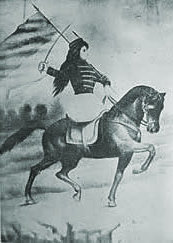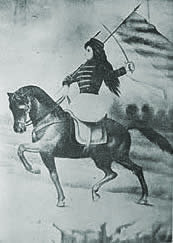
|
Women and Independence in Latin America An exploration of women's involvement in the Latin American Wars of Independence |

|

|
Women and Independence in Latin America An exploration of women's involvement in the Latin American Wars of Independence |

|
Gender:Female
Ethnic origen: White
Events:
| 1651 | - | Mexico City | - | Not applicable | - | She was born on 12 November 1651 (or 1648) probably in San Miguel de Nepantla. |
| 1667 | - | Mexico City | - | Unknown | - | She lived in the Carmelite convent, Mexico City from August to November 1667. |
| 1669 | - | Mexico City | - | Unknown | - | She entered the Jeronimite Convent of Santa Paula, Mexico City. |
| 1689 | - | Madrid | - | Unknown | - | One of her works, Inundación castálida was published in Madrid |
| 1690 | - | Mexico City | - | Unknown | - | The church authorities pressured her to stop writing about profane matters. |
| 1693 | - | Mexico City | - | Unknown | - | She stopped writing around 1693. |
| 1695 | - | Mexico City | - | Unknown | - | She died of the plague on 17 April 1695. |
Connections:
NunsBiography:
A nun, poet and writer, born in 1651, whose works were published in Spain in 1689, 1692 and 1700, by the efforts of her friend María Luisa Manrique de Lara, Countess of Paredes and wife of the Viceroy. Her work was widely read and there were several reprintings. She wrote poems, dramatic verses, prose and autobiographical works. She lived in the Carmelite convent, (Carmelitas Descalzas) Mexico City from August to November 1667 and entered the Jeronymite Convent of Santa Paula, Mexico City in 1669. In 1690 the church authorities pressured her to stop writing about profane matters and she ceased writing around 1693. She died of plague on 17 April 1695. (Sabat de Rivers, 455-457)
She was born Juana Ramírez de Asbaje, in San Miguel de Nepantla (Mexico City). When she was a young child she asked her mother to let her study in Mexico City. Women's education was prohibited at the time, so she taught herself from her grandfather's library. Her works include "Carta Tenagórica" (1690) and "La Respuesta a Sor Filoteca de la Cruz" (1691) a reply to the Archbishop of Puebla who used the pseudonym Sor Filoteca to insist that Sor Juana stop producing profane works. She defended her position in an extraordinary autobiographical essay. (Vera Lamperein, 36)
At the age of 7, she asked her mother to dress her as a boy so that she could attend the Mexico City university. In 1665 she became lady-in-waiting to the Marqueses de Mancera, at the Mexican court. They befriended her, but she was nonetheless seen as a freak for her literary ability. She wrote poems and plays, and decided to join a convent as a socially acceptable way of avoiding marriage. Arenal describes her cell as more of a salon in which she received religious figures, scholars, writers and travellers. She produced poems for the court and wrote plays for religious festivals. (Arenal, 164-183)
References:
Miller, Beth (editor). (1983) Women in Hispanic Literature: Icons and Fallen Idols
Smith, Verity (editor). (1997) Encyclopedia of Latin American Literature
Werner, Michael S. (editor). (1997) Encyclopedia of Mexico
Vera Lamperein, Lina (1994) Presencia femenina en la literatura nacional: Una trayectoria apasionante 1750-1991